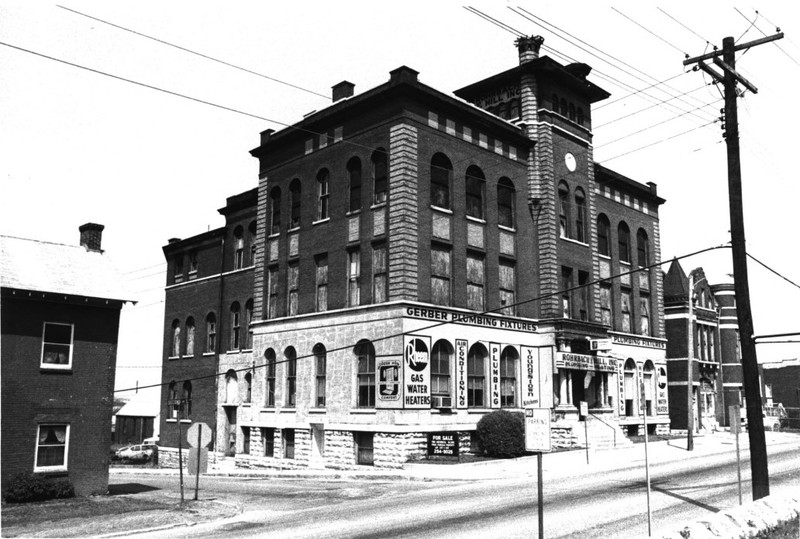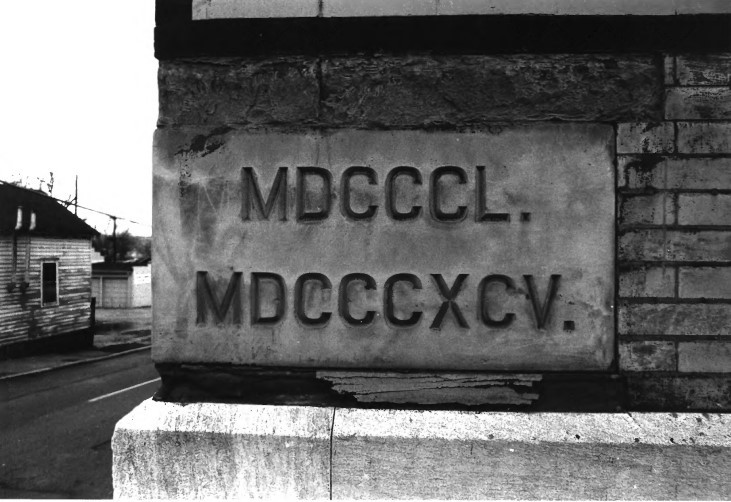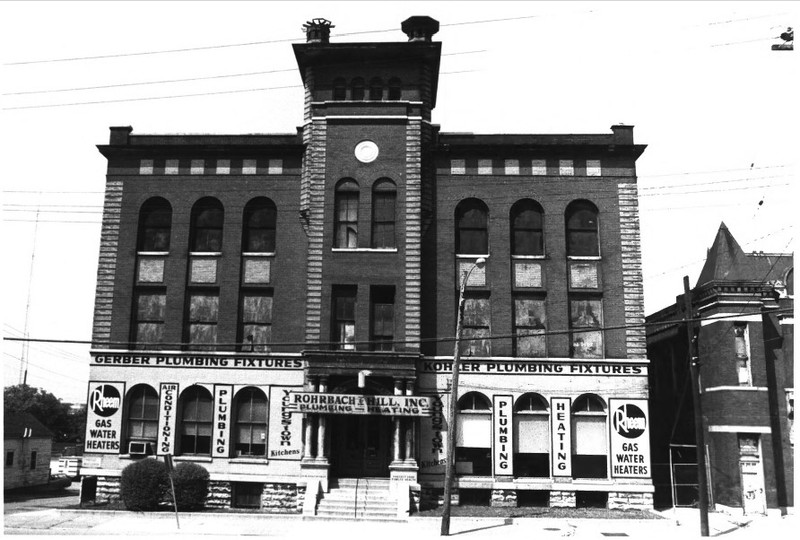Litterer Laboratories Building (Templeman Academy)
Introduction
Text-to-speech Audio
Named today for Nashville Mayor William Litterer who purchased and donated the building to Vanderbilt, this structure has two dates inscribed near a corner in Roman numerals: 1850 and 1895. The first date is for the founding of the city's first medical school by the University of Nashville while the second is when this building for the University of Nashville Medical Department was finished. The building was shared with and later owned by, the medical department of Vanderbilt University. Litterer Laboratories now contains office space and Templeman Academy, a private prep school. The building was added to the National Register of Historic Places in 1978 for its significance in architecture and education. It is one of only two surviving buildings from the former campus.
Images
Front (northeast) and side of Litterer Laboratories as a plumbing supplies business in 1977 (Leonard Marsh for NRHP)

Cornerstone of Litterer Laboratories in 1977 photo for NRHP (Leonard Marsh)

Litterer Laboratories (U of Nashville Medical Dept.) on 1897 Sanborn map (Vol. 2 p. 110)

Front of Litterer Laboratories in 1977; painted signs on first floor (Leonard Marsh, NRHP)

Backstory and Context
Text-to-speech Audio
The street where the Litterer Laboratories building stands used to be named Market St.; the side street was Elm. The University of Nashville was established in 1785 when this area was still part of North Carolina. In 1874, Vanderbilt and the University of Nashville made an agreement to share the same medical school department. In 1895, the two universities split their medical schools and the Market St. building was constructed to house the U. of Nashville's medical school. The building cost was roughly $40,000.
There are hints of Chicago commercial style architecture in the Litterer Laboratories building, including the arched windows and simple styling. Classical elements are soon, too, in a pair of Tuscan columns that support an entablature at the front entrance, inscribed with the building's name. A stone archway above the entrance reads "Vanderbilt University." A stone string course separates the first from the second floor. The interior featured simple woodwork and exposed red brick. Some simple decoration was added on the first-floor interior, with glazed white brick on the walls a few feet from the floor and terra cotta egg and dart style molding near the ceiling.
If you were entering the building in the 1890s, you'd walk through the central front door and would be within the rectangular front part (block) of the building, with reception rooms on the first floor. If you were going to an upper floor, you'd walk to the stairwells behind the rectangular block of the building, with stairs on both sides of the building. One floor above in the rectangular block was the surgical laboratory, while the third floor held dissecting rooms. The rear portion of the building was a seven-sided semi-circle with lecture rooms on the first two floors and an amphitheater on the third. Restrooms were located in a separate one-story brick building in the northwest corner of the rear yard.
Former Nashville Mayor William Litterer (1834-1916) purchased the building from the University of Nashville Medical Department in 1915 and donated the structure to Vanderbilt. The building was renamed in honor of the politician and highly successful businessman. According to a 1916 Vanderbilt U. publication, the late Mr. Letterer donated the building to be used as a laboratory for bacteriological research; his nephew was a professor in that field at Vanderbilt. The building was "renovated and specially equipped" for that purpose soon after it was received. The university's hospital was located in their former medical school by 1916, three blocks away on the corner of Elm and Fifth Avenue. Vanderbilt U. used the Litterer Laboratories building until 1925 when the med school moved to their campus in West Nashville. Only one other building from the former Vanderbilt campus remains in this Rutledge Hill neighborhood.
A plumbing supplies company owned the Litterer Laboratories building until the mid-1970s and made some modifications to the front windowsills; they also painted signs for plumbing products on the facade. Luckily, the signs were able to be cleaned away by later owners. Next door to the north is another historic building, the Geddes Fire House (also a Clio entry). The same local couple - Mr. and Mrs. Don Shaw - owned both buildings by the early 1980s.
Sources
Anonymous. The Litterer Laboratory Building. Vanderbilt University Quarterly (Vol. 15 no. 2). April 1st, 1915. 85 - 86.
Bryant, Linda. "Historic downtown building eyed for private school." Nashville Post (Nashville) October 19th, 2018. Education sec.
Nashville Post Staff Reports. "Permit Patrol: 4 March 2019, Work being done for downtown private school...." Nashville Post (Nashville) March 4th, 2019. Business sec.
Paine, David H. NRHP Nomination of Litterer Laboratory. National Register. Washington, DC. National Park Service, 1977.
Vanderbilt University. Register of Vanderbilt University for 1915-1916. Nashville, TN. Printed for the University, 1916.
Williams, William. "Historic ex-fire hall downtown sells for $2.6 million." Nashville Post (Nashville) May 1st, 2019. Business sec.
Williams, William. "Rutledge Hill buildings see change." Nashville Post (Nashville) May 13th, 2019. Business sec.
Williams, William. "Start date unclear for downtown boutique hotel project." Nashville Post (Nashville) May 17th, 2020. Business sec.
National Park Service (NPS): https://npgallery.nps.gov/AssetDetail/NRIS/78002581
NPS: https://npgallery.nps.gov/AssetDetail/NRIS/78002581
Library of Congress (LOC): https://www.loc.gov/item/sanborn08356_003/
NPS: https://npgallery.nps.gov/AssetDetail/NRIS/78002581
